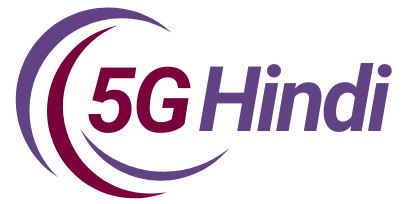The traditional view of education often focuses solely on academic achievement, but forward-thinking schools are starting to see the bigger picture. Integrating comprehensive career guidance into the curriculum is no longer a “nice-to-have” but a necessity for students navigating an increasingly complex world. This article explores how schools are actively transforming the educational experience by embedding career exploration and development into the everyday learning process, ensuring students are not just academically prepared but also ready to thrive in their future careers. We’ll explore the what, why, and how of this vital shift, offering a roadmap for creating future-ready graduates.
Table of Contents
From Textbooks to Tomorrow: Why Career Guidance Needs a Curriculum Upgrade
The traditional school model, while essential, sometimes falls short in connecting classroom learning with the realities of the professional world. For many students, the link between what they learn in textbooks and their future careers remains unclear, leading to disengagement and uncertainty. That’s where integrated career guidance steps in. It’s about shifting the focus from simply acquiring knowledge to understanding how that knowledge can be applied in diverse professional fields. This includes exposure to varied industries, skill development, and most importantly, helping students identify where their passions and talents align with real-world opportunities.
The Case for Early Exploration: Planting Seeds of Career Awareness
The concept of career guidance has evolved past late-stage decisions about college majors. The most forward-thinking schools are now incorporating career exploration from an earlier age. Research increasingly highlights the benefits of early exposure, helping students develop self-awareness, explore possibilities, and make informed choices as they move through their educational journey.
Why the “Wait and See” Approach Doesn’t Work Anymore
In a rapidly changing job market, the “wait and see” approach leaves students unprepared for the demands of the future. Technology and automation are reshaping industries, meaning that traditional career paths may not exist in the same form by the time today’s students enter the workforce. Early career exploration helps students develop adaptability, critical thinking, and the ability to navigate change, which are essential for thriving in the 21st-century. This involves more than just taking a career aptitude test; it’s a process of discovery and self-reflection.
Shaping Self-Awareness: Discovering Talents and Passions
Early career guidance fosters self-awareness by encouraging students to understand their own strengths, weaknesses, interests, and values. This involves activities designed to help students identify what they’re truly passionate about, ensuring they pursue career paths that are personally fulfilling. It goes beyond simply identifying potential careers; it’s about understanding the why behind career choices . This self-knowledge is vital to career satisfaction.
Weaving Career Guidance into the Fabric of Learning
Integrating career guidance into the curriculum requires a more holistic, all-encompassing approach. This means embedding career-related learning into various subject areas, not just limiting it to a specific class.
The Interdisciplinary Approach: Connecting Subjects to Careers
One of the most effective ways to integrate career guidance is to connect what students learn in their core subjects to real-world careers. For example, a history lesson on the Industrial Revolution can spark a conversation about how technological advancements have shaped modern industries and the job market. A math class can explore how different professions use mathematical concepts in their daily work. This interdisciplinary approach demonstrates the relevance of academic subjects and motivates students to see learning as a valuable tool for their future. It allows students to see the practical applications of theoretical knowledge.
Beyond the Classroom: Experiential Learning Opportunities
Learning shouldn’t be confined to textbooks and lectures. Experiential learning plays a vital role in bringing career exploration to life. This includes opportunities like:
- Field trips to local businesses 🚌
- Projects based on real-world case studies 📝
- Simulations that allow students to test their abilities in different scenarios 🎮
These experiences offer hands-on exposure, helping students understand the day-to-day realities of different careers.
Key Strategies for Successful Integration
Successful integration requires careful planning and creative strategies that are both effective and engaging.
Mentorship Magic: Pairing Students with Professionals
Mentorship programs can provide invaluable guidance and support to students. Pairing students with professionals in their fields of interest can provide valuable insights, practical advice, and a sense of direction. Mentors offer real-world perspectives, share their experiences, and help students navigate potential challenges. These relationships are essential for developing professional networks early on.
Tech-Powered Pathways: Utilizing Digital Tools and Resources
Technology can significantly enhance the effectiveness of career guidance . Online platforms, digital resources, and virtual career fairs offer students access to a wide range of information about different professions. Students can use online tools to complete self-assessments, learn about job market trends, and connect with professionals in their fields. Digital tools are also a great way to help keep track of student progress.
Workplace Encounters: Internships, Job Shadowing, and Real-World Experience
Hands-on experience is crucial in helping students grasp the practicalities of different careers. Internships offer longer-term immersions, while job shadowing provides shorter glimpses into daily tasks in various workplaces. Both experiences allow students to develop essential skills, gain confidence, and make well-informed decisions about their future. These experiences are not just about learning about jobs; they’re about learning how to work.
The Role of Career Fairs and Networking Events
Career fairs and networking events provide invaluable opportunities for students to connect directly with professionals from a variety of industries. These events also help students develop crucial networking skills, which are vital for navigating the professional world.
Addressing the Hurdles: Overcoming Challenges in Implementation
Integrating career guidance into the curriculum isn’t without its obstacles. Schools often face limitations that require creative and strategic solutions.
Resource Realities: Tackling Funding and Staffing Shortages
One of the main obstacles is the lack of funding and adequate resources. Many schools lack the budget to hire dedicated career counselors or acquire necessary technologies. This requires leveraging community partnerships, seeking grants, and making use of readily available free resources. Innovative solutions, like cross-department collaboration and utilizing volunteer mentors, can also help address these limitations.
The Training Gap: Equipping Educators with the Right Skills
Many educators may not have the training or expertise to effectively deliver career guidance . This necessitates the need for professional development workshops and training sessions that equip teachers and school counselors with the tools and techniques to help students explore different career options. This can be an ongoing process with regular updates to keep pace with industry changes and new technologies.
Engaging Families: A Collaborative Approach to Career Development
Career planning is not something that happens solely within the confines of a school. Engaging families is crucial for a student’s career development journey. Schools should inform parents about the career guidance resources available and encourage them to participate in career conversations with their children. Workshops and family events focused on career exploration can help parents play a more informed and supportive role.
A New Horizon: How Integrated Guidance is Shaping the Future
Integrated career guidance isn’t just about getting a job; it’s about empowering students to build a career path that aligns with their skills, values, and passions.
The Impact on Student Motivation and Engagement
When students see the relevance of their studies to their future goals, their engagement and motivation increase. Integrating real-world applications into academic learning allows students to feel a sense of purpose and direction, leading to enhanced academic performance and a greater interest in education overall. They can also see the link between what they learn in school and the practical world of work.
Preparing Adaptable and Future-Ready Graduates
By exposing students to a wide range of industries, skills, and experiences, integrated career guidance prepares them to be adaptable and future-ready. They develop the critical thinking, problem-solving, and communication skills that are valued by employers. This holistic approach to education helps students navigate an evolving job market with confidence.
Beyond the Job: Fostering Lifelong Learning
Career guidance instills in students the mindset of lifelong learning. This allows them to understand the importance of continuing to develop their skills and knowledge throughout their careers, and to adapt to changes in their chosen fields. It’s a recognition that education is a continuous journey, not a destination.
The Ripple Effect: Building Stronger Communities Through Career Guidance
Ultimately, integrating career guidance into school curricula benefits not only individual students but the entire community. By equipping students with the skills and knowledge necessary to be successful in their chosen careers, we create a more skilled, innovative, and economically robust workforce. This can contribute to the long-term prosperity of our society.
To learn more about implementing effective career guidance programs, explore the Gatsby Benchmarks for good career guidance, a useful framework that outlines eight benchmarks for successful career programs. Gatsby Benchmarks
By weaving career guidance into the very fabric of education, schools can empower their students to not only thrive but also make meaningful contributions to the world.

